Roses by Every Name
Those of you who have read a few of these newsletters will know that I love gardening books that are organized by months or seasons. I love being able to dip into them and see the garden through the eyes of the author. What did they love at this time of year? Do I love the same things? Will the plants mentioned even grow in my garden?
Eleanour Sinclair Rohde loved roses and so do I—after all, it is my middle name. Reading through this section gives a glimpse of the roses that were grown less than a hundred years ago. It is interesting that we do not grow many of the same ones. She concentrated on species roses, which seems to me to be rather ahead of her time. She grew many of what we call today “old roses.” One that she mentions that I have grown is the pink-flowered and nearly thornless ‘Zéphirine Drouhin’. I lost the plant some years ago—maybe it is time to add it back into the garden.
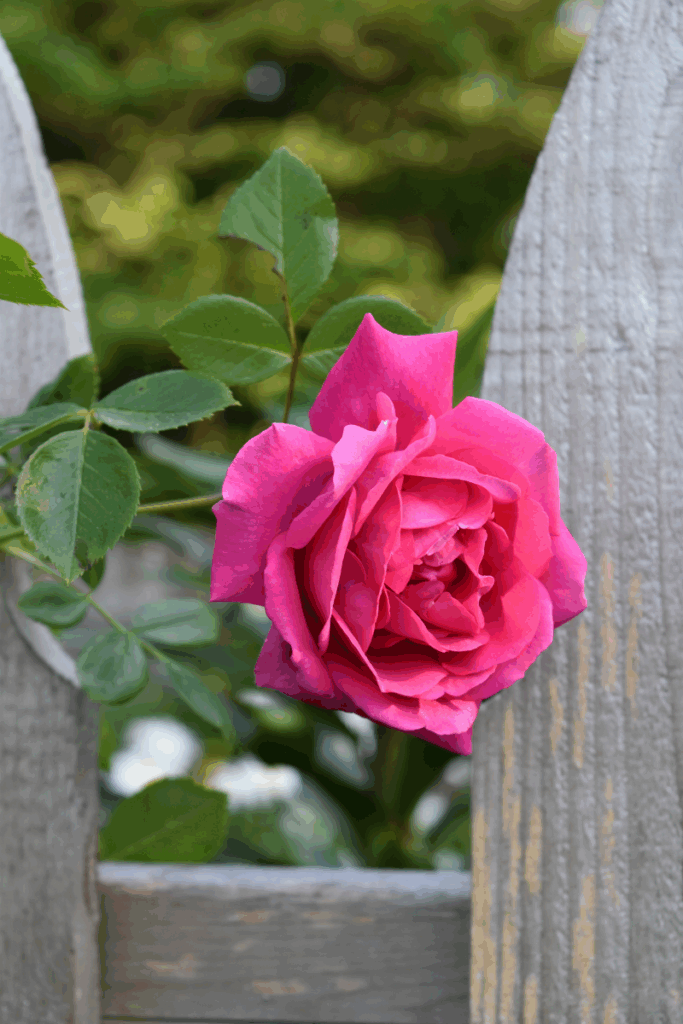
One rose that we both like is the single yellow rose called ‘Mermaid’. Eleanour calls it the “queen of yellow roses.” It was introduced in 1917 and has a quiet simplicity. Being a single flower with an open center makes it a pollinator favorite.
Eleanour said, “The loveliest specimen of ‘Mermaid’ that I know grows rampantly over a stone dove-cote in a courtyard rich with the scent of lavender bushes, overlooked by mullioned windows and full of the atmosphere of the fifteenth century.” With a little sleuthing I realized that she meant Nymans in Sussex. It is now owned by the National Trust, and I found a photo that I had taken that nearly matched the illustration from the book. Unfortunately, a big section of the house burned down in 1947, but the dove-cote and walled-garden section with lavender remains.
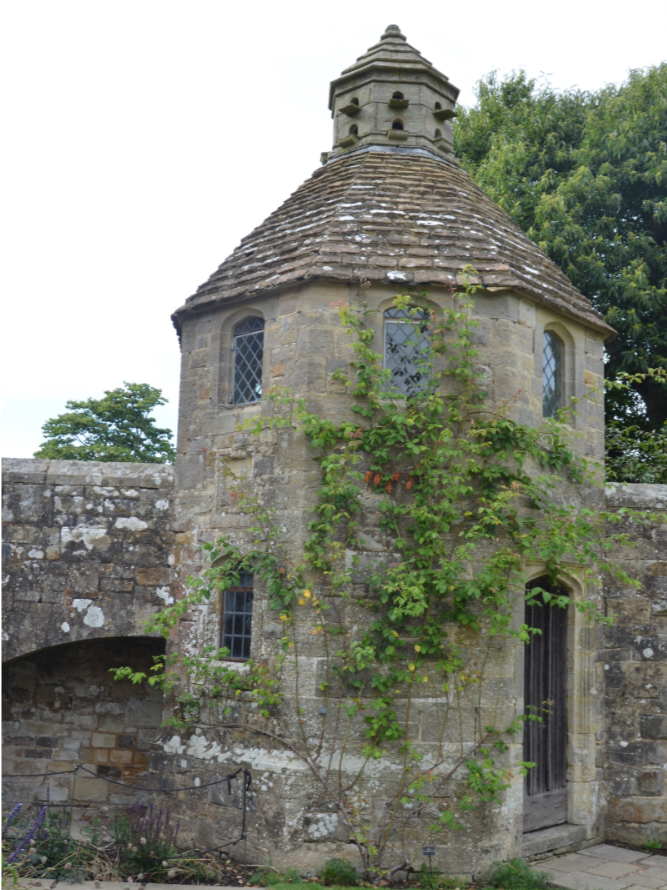

Ask Jenny Rose: Rhododendron Tips
The email question this month is from Abbey from Pennsylvania about her evergreen rhododendron that seems to be dying. Evergreens of all sorts have had a hard time in parts of America this winter. There were long droughts in many places in the late summer. Then winter came and the ground froze. Other enemies of evergreens this winter were strong winds, not much snow, and sudden cold snaps. The plants could not get water from their shallow roots, so the leaves dried out and turned brown. Do not be in a rush to take the rhododendron out. Trim back obviously dead parts that snap off easily. Wait and see if new leaves begin to shoot. If there is no new growth, blame the inclement weather and find a different plant that suits the site better than the rhododendron.
Please feel free to send me a photo and ask a question to be included in a future email newsletter. I will just use your first name and state or country unless you wish to be anonymous. Keep those questions coming!
Chelsea Flower Show 2025
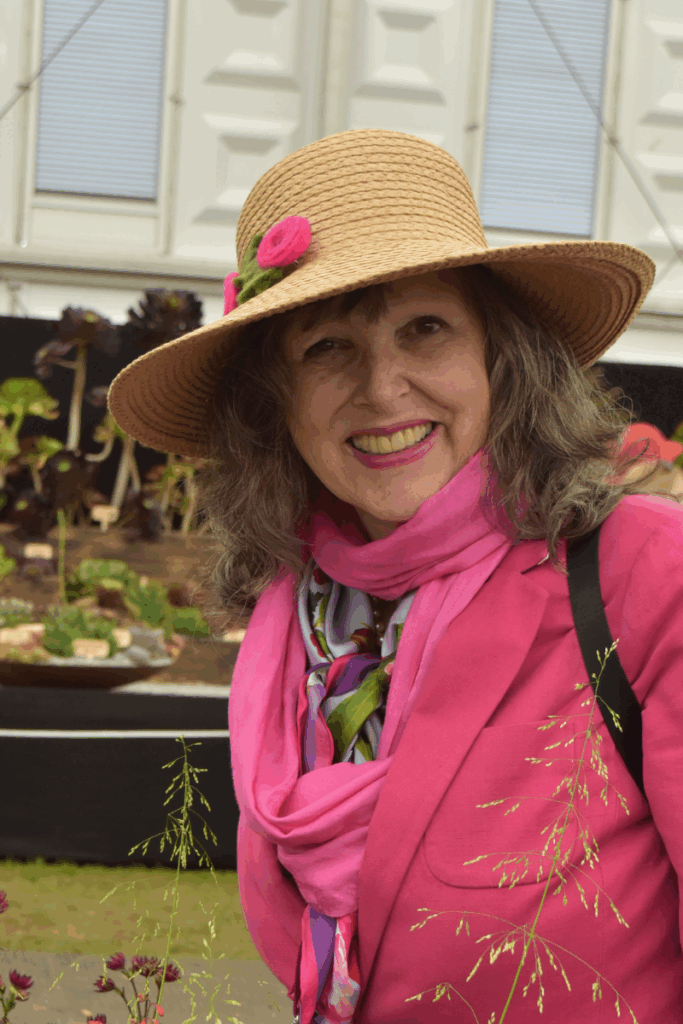
My garden travels this last month were extensive, but the highlight was my annual trip to the Chelsea Flower Show in London. Catch up on my blog with English gardening trends and things that caught my eye. My favorite garden was the first exhibit along Main Avenue for The Glasshouse and designed by Jo Thompson…
Plant of the Month: Roses
Following on from the wise words of Eleanour Sinclair Rohde, we are going to talk about the “sovereign” of the June garden—the rose. I would like to introduce you to four of my favorite roses that grow here at Northview.
I only grow old roses, or ones that have a similar look and are scented. I love ones that put all of their energy and resources into a massive bloom in early summer. You walk into the garden and get that wow factor. Here are brief portraits of four roses that grow on the fences and trees surrounding the Herb Garden.
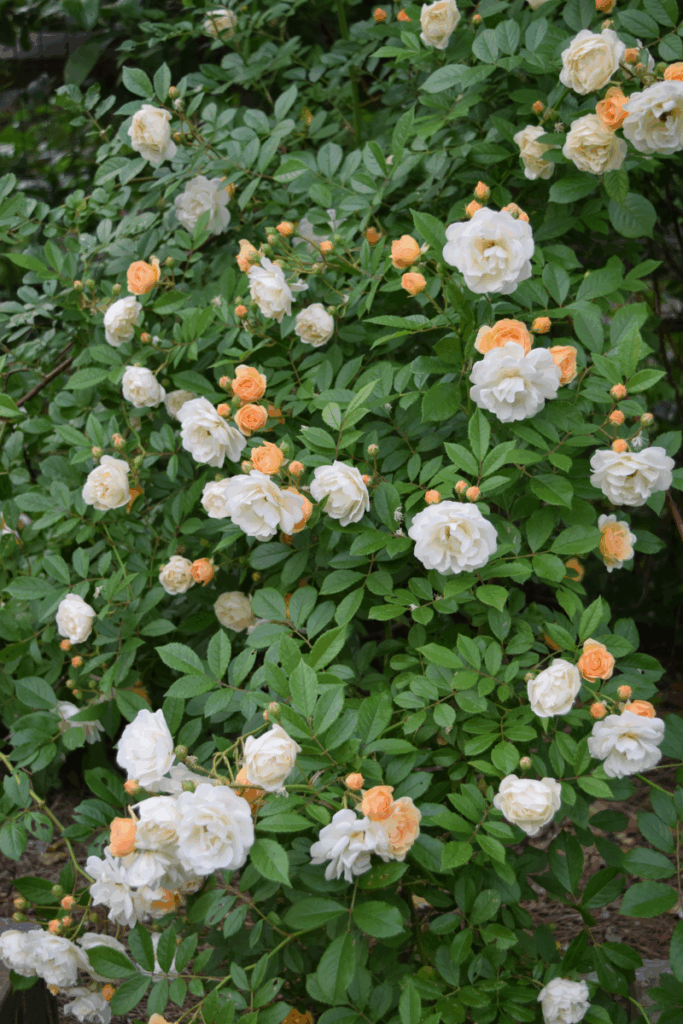
‘Ghislaine de Féligonde’ is a standout rose that I first noticed on a trip to Northern France about 20 years ago. Back in the days before the internet made searching easy, it took me a while to find it, but it has lived up to expectations. It is classified as a rambler and is at least 15 feet (5 meters) tall. Each spray of roses has a variety of colors at the same time, ranging from cream to apricot, with a light fragrance. I rarely prune it but just cut off any dead ends that I can reach.
This rose is from 1916. Read here for the story of the real Ghislaine, after whom the rose is named.
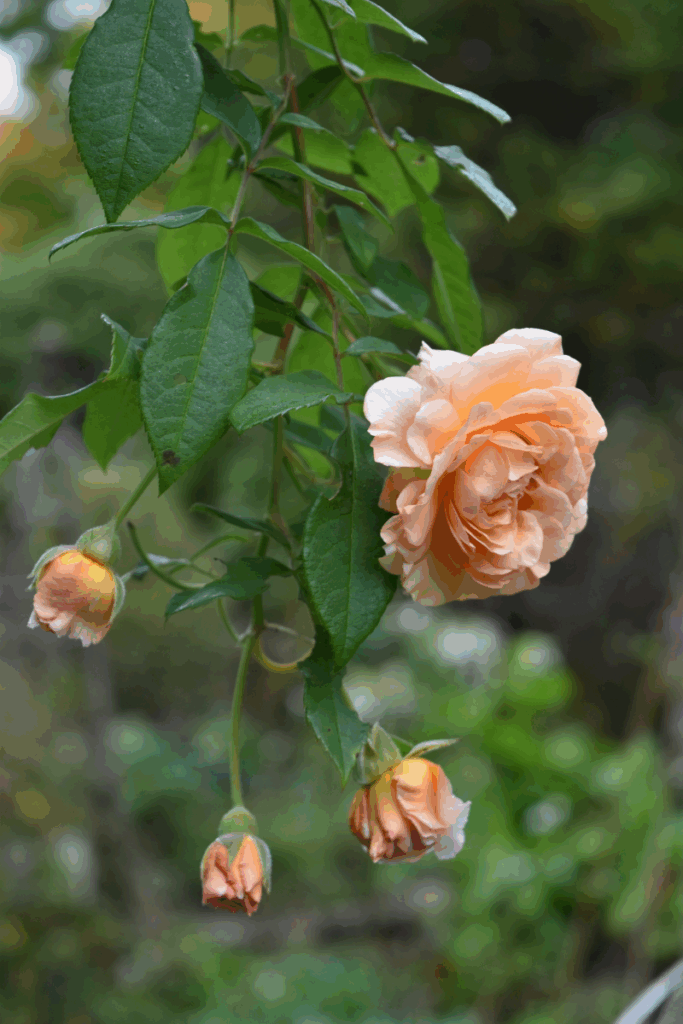
‘Buff Beauty’ is a beautiful hybrid musk rose that dates from 1939. Blooms are apricot to cream and the plant re-blooms with most flowers in spring, and another flush in autumn in my climate. I just bought a new arch from Agriframes at the Philadelphia Flower Show this spring. ‘Buff Beauty’ looks very handsome growing over it. This is the U.S. website link for the arch.

‘Felicite Parmentier’ is a button-like centifolia rose. It has the strongest old rose fragrance in my garden. It is an alba rose, but it has packed petals like a centifolia. One cut bloom can scent a room. Flowers start light pink that fades to white as they open. It dates from 1836.
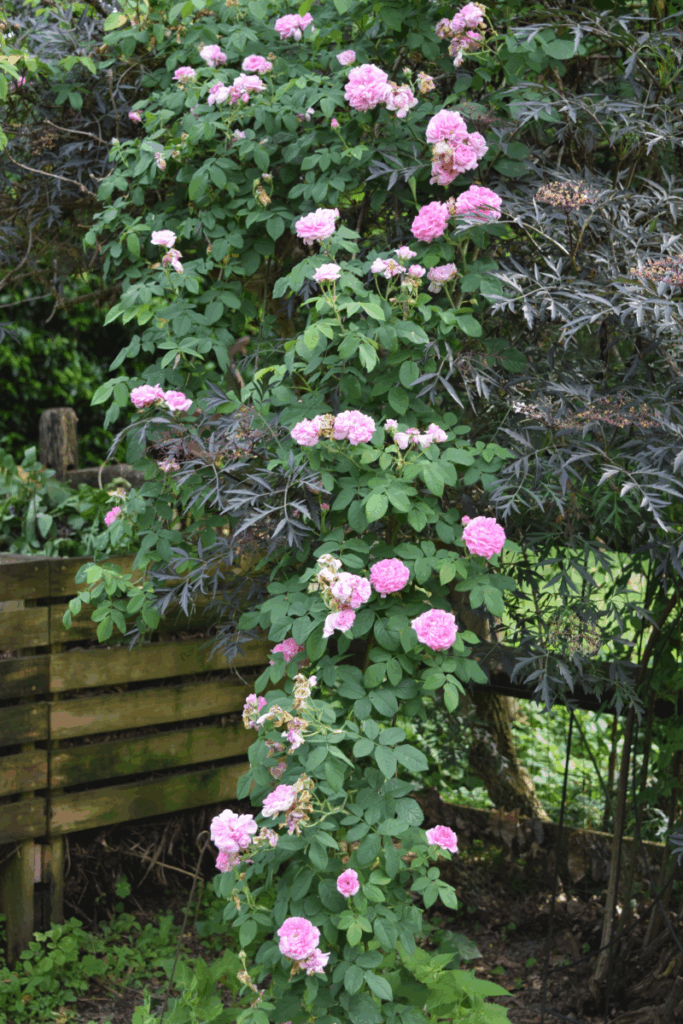
‘Ispahan’ is probably my favorite. The flowers are pink and have a lovely fragrance. The plant gets plenty of nutrition because it grows over, above, and next to the compost heap. I designed and installed the Herb Garden in 2000, and ‘Ispahan’ has been there from early on. There is one big outburst of bloom in June, and then the foliage stays quite good looking as a green backdrop for the rest of the plants.
Writing about roses always makes me want to add more roses to the garden. So, watch this space for future favorites.
Book of the Month:
Gardens of Delight: Throughout the Year
This is yet another book by an unsung early-twentieth-century female garden writer—there is a theme here. Eleanour was a well-educated woman who wrote prolifically. She wrote about 30 books but today is virtually unknown. I am most familiar with her herb books, which I love. The chapter for August in this book also shows Eleanour’s encyclopedic herbal knowledge.
As far as I know, there is no biography of Eleanour, even though she was an accomplished author who was friends with prominent gardening and writing women of her time. The Wikipedia page for her is pitiful—if someone wants to make that better, there is much to add. The best short appreciation of Eleanour that I could find is here.
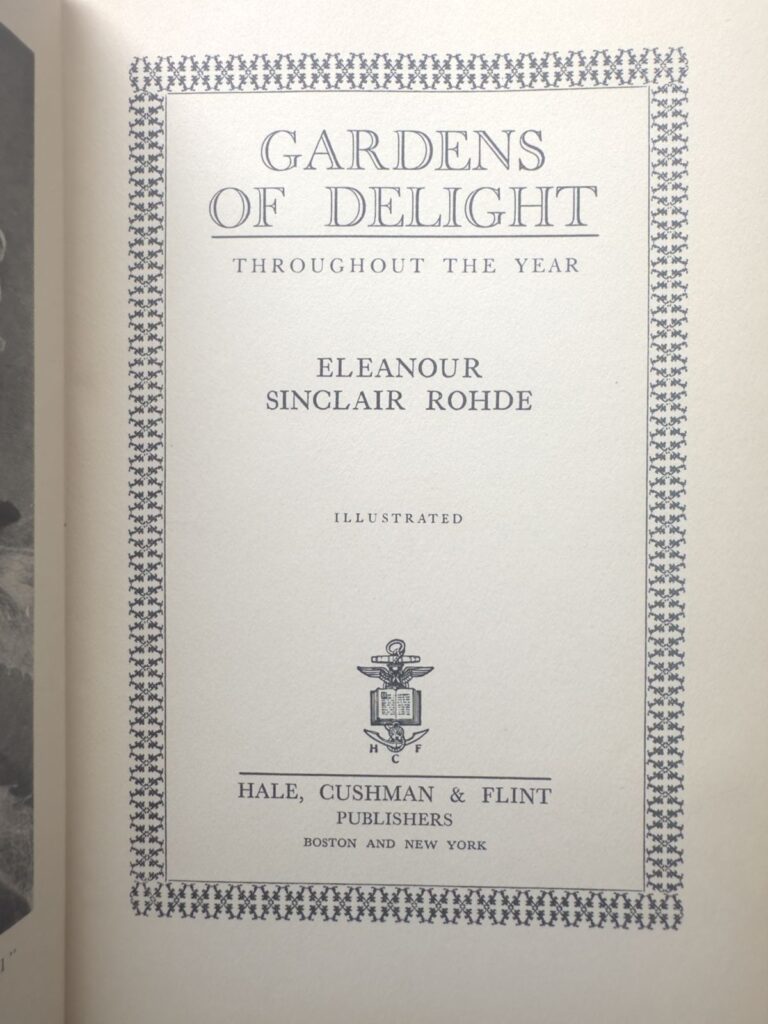
Gardens of Delight: Throughout the Year is a compilation of magazine articles stitched together to make the book. The title is an homage to a phrase in Parkinson’s book Paradisus. It is an apt title with the obvious delight that Eleanour takes in growing a wide range of plants, observing them, and writing about them. She was President of the Society of Women Journalists, so she was obviously well respected by her peers.
In the June section, as well as the love of roses, Eleanour expresses her admiration for sweet peas that she describes as “the queen of annuals.” There are detailed descriptions of how to grow them well, including using “supplies of ash from the bonfire.” She also decries the modern varieties that have long stems but no scent, and instead tells of a friend who loves the scented ones: “on her writing table, during the sweet pea season, she nearly always has a bunch of the old-fashioned flowers mixed with mignonette.”
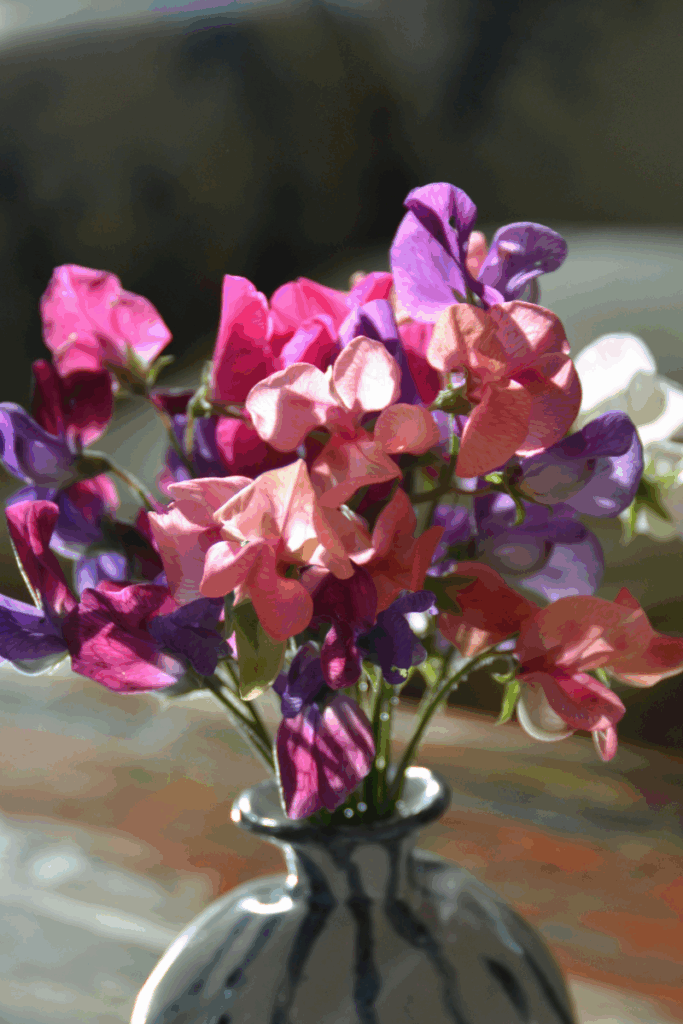
This book contains useful practical tidbits about growing, combined with fascinating historical and literary lore. Some of the plants are ones that we no longer grow, but it is still interesting to see a window into a forgotten gardening time.
In Case You Were Gardening…
Have a Gardening Question? – May 14, 2025
A Mother’s Day Tradition – May 12, 2025
Towers to Flowers – January 7, 2024
If you like this newsletter, please tell your gardening friends about it. It is easy to subscribe by contacting me via my website.
If you would like to see photos of my garden at Northview and images of my garden travels, please follow me on Instagram @NorthviewGarden and @JennyRoseCarey
Bye for now,

PS: If you want to hear more of my thoughts and support me in what I do, check out my books. Glorious Shade celebrates the benefits of shade and shows you how to make the most of it. This information-rich, hardworking guide is packed with everything you need to successfully garden in the shadiest corners of a yard.The Ultimate Flower Gardener’s Guide gives home gardeners the confidence they need to create the flower-filled garden of their dreams. Instead of concentrating primarily on color, it brings flower shape and texture to the fore, helping homeowners make plant choices that come together in an aesthetically pleasing way.
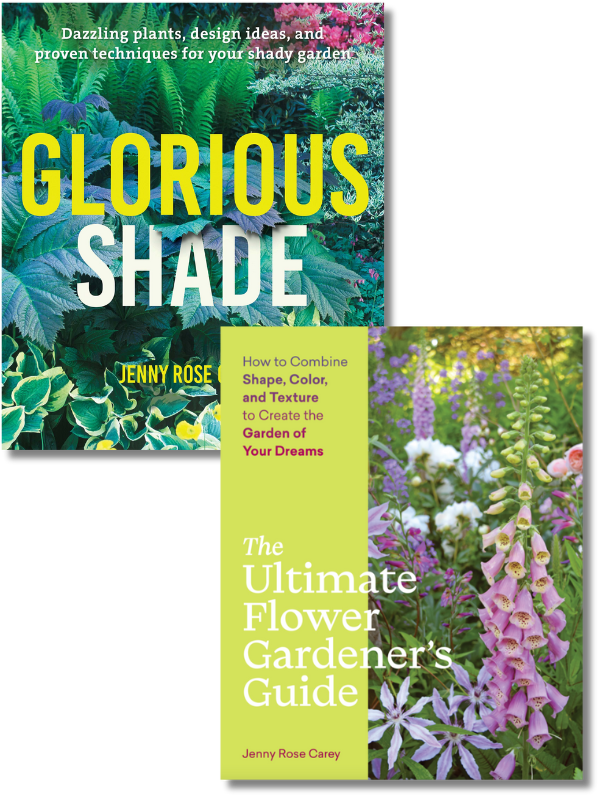




Leave a Reply